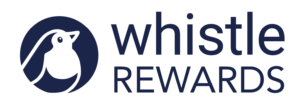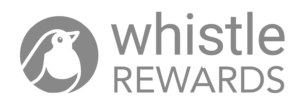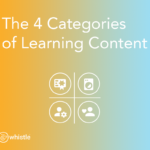5 Microlearning best practices
Tips for a better microlearning program
by Richard Nava
Microlearning is one of the best ways to retain knowledge and introduce new concepts in today’s technologically adept and social environment. The Association for Talent Development (ATD) in 2017 revealed that users preferred this method of learning as it was on-demand and not as overwhelming and research shows it can improve knowledge retention by 20%.
Taking advantage of modern microlearning platforms requires current, long-form content (hour-long video archives or binders of PowerPoint decks) to be adapted and migrated to the shorter more interactive format – not always an easy task.
As companies begin to shift to microlearning platforms and content formats, it is an opportunity to address not just shorter learning chuncks, but think about how a learning program can actually produce the desired business outcomes (improve retention, productivity, safety, etc.) Here are some suggested best practices when setting up your microlearning content.
1. Mobile at the top of your Mind
Your audience will most likely be engaging with your content via a mobile device. This means your key elements (videos, quizzes, and readings) must cater to the mobile, on-the-go experience. In the ATD Microlearning research report, 59% of the participants indicated that 2-5 minutes was the ideal length of the included activity. The most popular forms of media being consumed today are short videos (example: Youtube, ) or very-short format videos (TikTok, Facebook, LinkedIn). Research shows the most popular video lengths are 4.3 minutes and 15.6 seconds respectively. This means videos should be no longer than 5 minutes, and readings should take no longer than 5 minutes to complete.
Keep quizzes under 20 questions with a pass rate of 80% or higher. The lower the question count, the higher the pass rate should be. 20 is definitely on a higher-end of question amount, but keep in mind that questions in a microlearning platform should be quickly answered, taking less than half a minute to answer.
2. Begin With a Single Question
When mapping out your module, start with the main question that the user should be able to answer by the end of the module. Then, begin writing follow-up questions that circle back to the main idea. These follow-up questions are your chapters. Be sure each chapter only does 2 things: First, it answers the follow-up question. And second, it gives a better understanding of the module’s main idea. By starting with a question, you will know exactly what you need to include in your module or chapters to clearly answer it.
3. Trim the Excess
Given its short-form nature, you don’t have a lot of time to tell a lengthy narrative or provide several examples. Instead, you must keep your content direct and to the point. Only keep what is necessary to understand the module’s concept. Leave out anything that doesn’t add value or a deeper understanding of the module or chapter’s central topic. With quizzes, make sure questions pertain to the necessary knowledge needed when completing the module or chapter. Trim out any questions that are “extra” or repetitive.
In the Whistle platform, we create learning appendices so additional information can be provided that might not be critical to the ideal learning path, but it does not add clutter or cognitive load that can distract from the more important learning points.
4. Keep it Conversational and Engaging
Keeping content upbeat and conversational will hook the audience in, keeping them involved and curious. Videos with quick animations, memorable images, and sound effects can result in higher engagement and information retention. That said, there is a fine line between upbeat and cheesy. Always review your content before publishing it to your audience. If it feels more cheesy than upbeat and casual, you may need to edit a bit more.
If you aren’t sure how to gauge the production quality of your content, ask your audience! Include your employees in the process of perfecting your content by piloting with a test group, reviewing the content rating data on your Whistle Reporting, or use a Whistle survey to collect feedback from your audience. After all, they are the ones who are engaging in the content – let them tell you if your content is enjoyable or not.
5. Concepts and Context Dictate Your Form
Knowing your audience and objective should dictate how you develop your content. If your objective is to inform your team of a new product or how to operate specific machinery, your form and delivery can be pretty straightforward. However, if your objective is to deliver an abstract concept, such as “Recognition in the Workplace” or “Being a Better Leader,” it will be slightly more challenging, as a complete understanding of these concepts isn’t necessarily a linear path and requires more energy from the brain to organize and process abstract concepts. This is where Whistle’s Best Practices really become key.
Not everything, but most things, are fit for Microlearning
It’s important to note that not everything can be mastered through Microlearning. Repetition and hands-on experience are still the number 1 way to learn. When mapping out your content, understand where the limits of microlearning will reach for your objective. Microlearning can be an excellent tool for a full understanding or an excellent introduction to an involved process.

Richard Nava is a Technical Client Success Manager at Whistle responsible for helping clients create and manage microlearning programs on the Whistle platform. Nava’s background spans software engineering, client management and game design giving him unique insights into how technology intersects with great client experiences.
Whistle is the first learning platform to integrate the key elements that drive business outcomes – ability (microlearning), motivation (micropayments and recognition), cues (AI informed nudges and recommendations) while removing friction (simplified design and mobile centric approach). Together these multiply the impacts of microlearning to maximize the impact on business outcomes.









